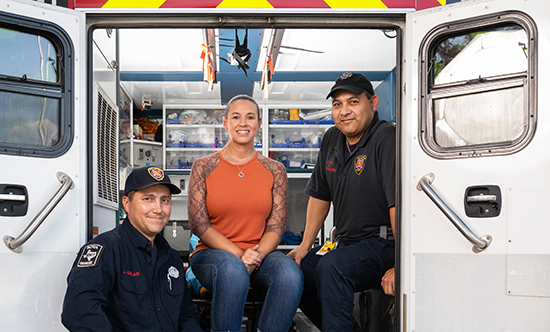Updates
A Battlefield Surgeon Deploys Combat Solution to Save Bleeding Trauma Patients (Texas Hospital Magazine)
Written by Shelley Kofler
On Jan. 30, 2019, Tiffany Kieschnick-Rivas was driving to the store when she had a stroke. Her Hyundai Sonata veered into a guardrail, flipped and landed in a ditch filled with water.
Within minutes of San Antonio Fire Department paramedics pulling her from the crumpled heap of metal, Kieschnick-Rivas, 37, was dead.
“She crashed,” recalled paramedic Jason Aguilar. “She had no pulse.” What they would later learn is that the woman’s spleen had ruptured and she was bleeding internally.
Today, however, Kieschnick-Rivas is telling her survival story thanks to a treatment plan the fire department and area medical partners implemented just three months before her wreck.
The EMS unit that rushed to the accident was equipped with whole blood, which is exactly what the name implies. It’s blood that contains all of its components and not just some of its main elements – platelets, plasma or red blood cells.
Instead of giving Kieschnick-Rivas a single blood component or the usual saline solution to replace lost fluids, paramedics gave her a whole blood transfusion at the crash site. Within five minutes her heart began beating again.
“She started trying to breathe on her own. She opened her eyes. This had never happened before,” Aguilar said.
As far as anyone knows, the young mother is the first blunt force trauma patient whose heart stopped beating and then was revived when ground crew paramedics transfused her with whole blood.
The San Antonio Fire Department has since expanded its whole blood program, and now carries it on eight EMS units strategically located around the city.

The fire department’s deputy medical director, Dr. C.J. Winckler, an emergency medicine physician at University Hospital in San Antonio, said his team is still analyzing data to determine the impact whole blood has had on the survival of patients transfused by department paramedics. However, he’s confident results will show that in the first year of using whole blood, a significant number who otherwise wouldn’t have made it survived.
QinFlow is honored to take part in SAFD whole blood program!
